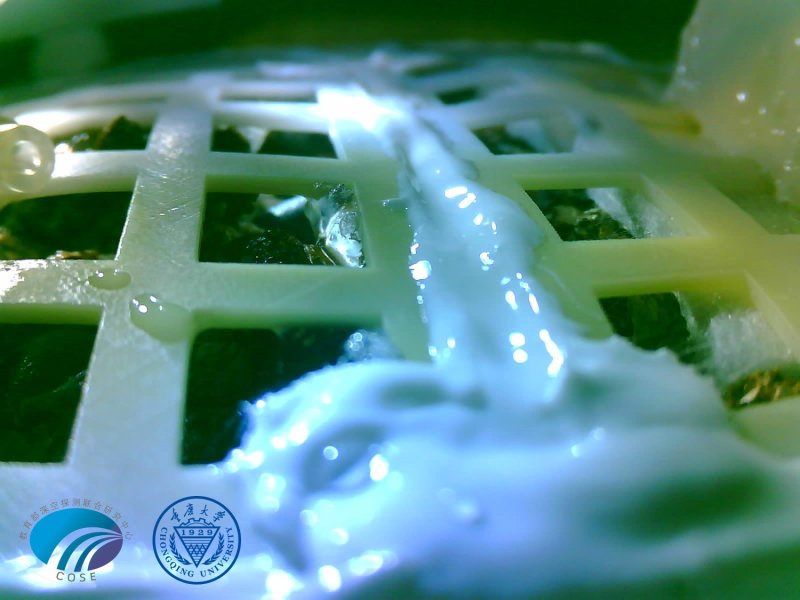China's space agency released a picture of a cotton seed sprouting in a biosphere on the Moon -- the first time plants have been grown on the satellite. Photo by People's Daily China/Twitter
Jan. 15 (UPI) -- Seeds carried to the far side of the moon by China's Chang'e 4 probe have sprouted, marking the first time plants have been grown on the lunar surface.
"First in human history: A cotton seed brought to the moon by China's Chang'e 4 probe has sprouted, the latest test photo has shown, marking the completion of humankind's first biological experiment on the moon," China's space agency wrote on Twitter.
In addition to cotton seeds, Chang'e 4 also carried potato seeds, yeast and fruit fly eggs to the moon -- all of which are insulated inside a protective biosphere.
China became the fist nation to put a spacecraft on the far side of the moon when Chang'e 4 touched down in early January.
Now, the China National Space Administration and its probe have completed another first.
China's lander rover is in the scientific exploration phase of its mission. In the coming months, Chang'e 4 will continue to carry out scientific observations across the less understood side of the moon. Scientists hope the observations will offer new insights into the satellite's makeup, as well as its formation and evolution.
Some space and international affairs analysts estimated that China's forays into lunar exploration could inspire a new space race of sorts. But this week, Chinese officials said they hope to ramp up cooperation with NASA.
Technically, the United States government and NASA are prohibited from working with China's space agency and state-owned companies. But at a news conference this week, Wu Yanhua, deputy director of CNSA, said the two space agencies shared data related to the recent moon landing.
According to Wu, NASA offered to help China observe Chang'e 4's touchdown using the American space agency's Lunar Reconnaissance Orbiter.
NASA has yet to confirm the cooperation, but officials have previously acknowledge sharing information.
"When they do a science mission to the moon, we're hopeful they will be able to share with us the data they receive, and when we do a mission to the moon, we can share data with them," NASA Administrator James Bridenstine told Quartz last year. "Understanding and characterizing the Moon and doing that kind of science is in the interest of all humanity. It's not something any one country should try to retain for itself."















